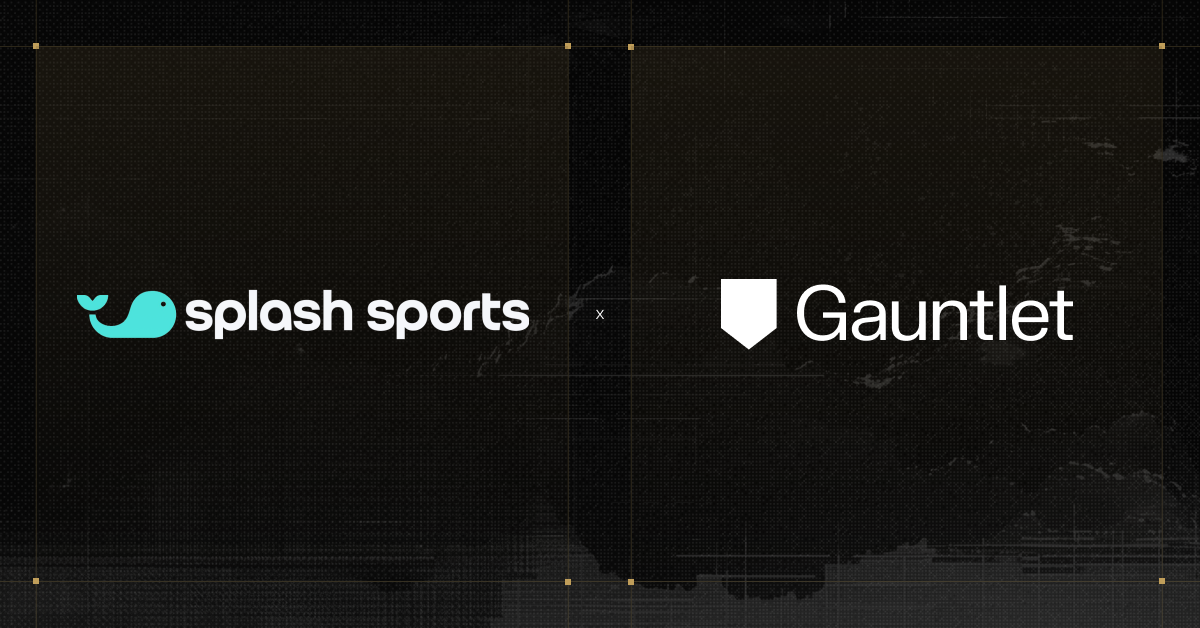Splash Sports, the upstart Daily Fantasy Sports platform, has won fans with its sleek interface. Now its tech renaissance is driven by CTO Mark DiAntonio. After leading a team of over 100 at DraftKings, building similar systems and technology, Mark set out to prove that a 20-person team armed with AI can outpace much larger groups.
To make that vision a reality, Mark turned to Gauntlet AI – bringing on John, a recent graduate whose persona-driven agent framework and deep, cross-functional immersion would become the blueprint for Splash's end-to-end AI-first overhaul.
Meeting John: An AI-First Engineer with the Gauntlet Playbook
That rethink began when Mark hired John, a recent Gauntlet AI graduate. "I knew right away John wasn't coming to just fill a seat," Mark remembers. "He came to shake things up."
John's first month wasn't about code or dashboards – it was about immersion. He spent days with the contest-ops team, sitting through compliance calls about real-money vs. self-managed games. He shadowed designers as they built high-fidelity mockups. He watched QA wrestle with flaky test scripts.
"John refused to make us victims of the black box," Mark says. "He taught us to ask, 'What exactly is the agent doing? Where did this prompt come from? Can we own it?'"
By week five, John had taken ownership of Splash's AI-First integration playbook: build custom personas for each role – designer-agent, test-agent, code-agent – while tapping best-in-class external models only where they made sense.
Spark Ignited in Prague's 48-Hour AI Sprint
Mark and John agreed that learning alone wouldn't build momentum. "We needed a visceral moment," Mark explains. "So Splash assembled the development team in Prague for a 48-hour AI hackathon."
Participants, solo and in pairs, had one mission: deliver a working contest demo – from data-feed integration to live UI – for NFL, NBA, or MLB, and one team even surprised everyone by spinning up a full WNBA contest, all powered entirely by agents. Product leads sketched rules in real time. Designers exported Figma frames. Coders wrote minimal glue code. Agents handled model calls, code generation, and even pixel-perfect QA checks.

"Gauntlet AI didn't give us a black-box solution. It gave us the skills and culture to build our own, and that's our competitive edge."
Chief Technology Officer at Splash Sports
That weekend, Splash didn't just prototype new contests – they rewrote the team's belief in what was possible.
Building an AI-First Culture Back Home
Prague's adrenaline fueled a permanent shift. Splash launched a weekly AI Guild – Friday sessions where coders demoed agent tricks, product managers pitched new persona ideas, and QA showed off test-agent improvements.
Open Competition
Teams compared Claude vs. Cursor vs. Splash's custom agents, swapping tips on prompt engineering and error handling.
Persona Workshops
Designers learned to think in "component-agent," teaching their agents Figma conventions so code would emerge automatically.
Cross-Functional Pairing
Product leads, engineers, and QA co-owned features end to end, asking, "Can this be an agent pipeline?" before writing a line of code.
"We broke down silos," Mark says. "Now a designer can ask, 'What's the prompt to turn this mockup into a native component?' instead of filing a ticket."
Concrete Wins: Agents in Action
In just a few sprints, Splash saw dramatic improvements:
Faster Design Hand-off
Designers export their Figma mockups into our code-generation pipeline, which turns them into Swift or Android snippets. This removes the manual rebuild step and lets the team focus on tweaking designs instead of rewriting them.
Automated Testing
Our QA agents pick up changes each evening and run full end-to-end tests automatically. That cuts down the time engineers spend writing and maintaining test scripts, so they can investigate failures rather than update boilerplate.
Smaller Team, Steady Delivery
A core group of 20 engineers now maintains the same feature cadence that previously took 60–80 team members. By automating repetitive tasks, the team keeps deliverables on schedule with fewer hands in the codebase.
Measuring AI-Powered Productivity Gains
Splash's new AI-first transformation wasn't just anecdotal – it showed up in the numbers:
Roadmap health is now measured by how many big "bets" are pulled forward weekly. Legacy bottlenecks in handoffs and test cycles have vanished.
Resonance Across the Ecosystem
Investors and conference peers have noticed. At Global Gaming Expo, CTOs swarm Mark with questions: "Can you coach our team?" On LinkedIn, product leaders ask for a seat at Splash's AI Guild. Even the board sees Splash as "an army in twenty bodies."
"Embedded-engineer roles? We quietly phased those out," Mark confesses. "Now we hire AI advocates whose first instinct is, 'How do I automate this?' Their output is already seven-fold."
What Happens When You Embed AI-First Engineers?
Asked what he'd tell other companies eyeing a Gauntlet grad hire, Mark is unequivocal:
"If you want to reinvent your culture, move faster than headcount growth, and turn a small team into a powerhouse, do it in a heartbeat. Splash will hire another Gauntlet grad the moment timing allows."
Splash Sports didn't just adopt AI tools – they revamped their operating model around agents, personas, and open competition. From deep onboarding to a hackathon to measurable velocity gains, John's journey at Splash offers a roadmap for any tech leader looking to leap ahead.
Your competition is moving quickly. Gauntlet AI keeps you ahead.
Become a Partner